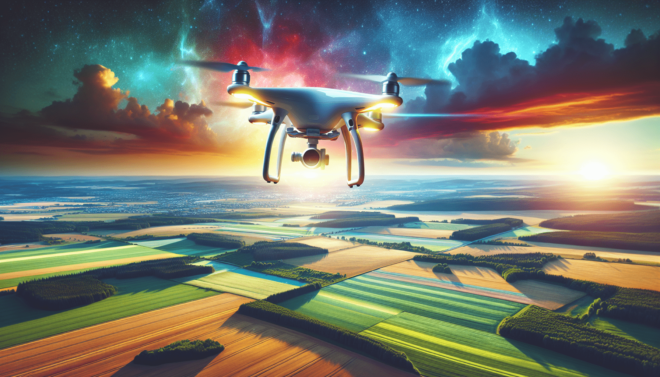Have you ever wondered how to transform your drone photos from basic shots to breathtaking images that pop? If so, you’re in the right place. Today, let’s talk about how to expertly edit drone photos using Adobe Lightroom, a tool that’s accessible and powerful once you get the hang of it. Allow me to guide you through some straightforward yet effective techniques that will elevate your aerial photography to a professional level.
Why Use Adobe Lightroom for Drone Photography?
Adobe Lightroom stands out in the realm of photo editing for its user-friendly interface and robust features. It is particularly advantageous for drone photography because it allows you to manage everything from basic adjustments to intricate edits, enhancing the natural beauty of your aerial shots while retaining their originality.
The Beauty of Lightroom Presets
Lightroom presets are pre-defined combinations of edits that save you time and effort. When used properly, they can be a real game-changer, streamlining your workflow and helping you maintain a consistent style. You can either create your own presets or buy professional ones specifically designed for drone photos. This makes the process less about trial and error and more about creativity.
Getting Started with Adobe Lightroom
Before we begin, make sure you’re using the latest version of Adobe Lightroom. Keeping your software up-to-date ensures access to the newest features and bug fixes. If you’re new to Lightroom, try familiarizing yourself with the interface first: the panels, sliders, and adjustment tools you’ll frequently use.
Importing Your Drone Photos
The import process is quite straightforward. Connect your drone, select the photos you wish to import into Lightroom, and click the import button. Organizing your images into collections at this stage can also help in managing large sets of photos efficiently.
Essential Editing Techniques
Basic Adjustments
Start with basic adjustments; these are the foundational edits that can subtly but effectively enhance the overall look of your photo. Begin with the exposure, contrast, highlights, shadows, whites, and blacks. These sliders are crucial for setting the correct tone and detail level in your image.
- Exposure: Enhancing the brightness or darkness.
- Contrast: Deepening the distinction between lighter and darker areas.
- Highlights/Shadows: Recover lost details in the bright or dark areas.
- Whites/Blacks: Fine-tuning the range and richness of colors.
Use of the Radial Filter
The Radial Filter in Lightroom is perfect for adding localized adjustments, such as brightening specific areas or drawing the viewer’s eye to a focal point. You might use it to subtly enhance the area around a subject, such as a building or landscape feature, creating a sense of depth.
Applying Graduated Filters
With drone photography often capturing broad expanses of sky and land, the Graduated Filter becomes a handy tool. It allows you to adjust sections of your photo gradually, perfect for balancing the exposure between the sky and the ground. This technique can help in mitigating issues like dull skies or overly bright highlights.
Enhancing Details and Clarity
Sharpening your image and enhancing clarity are vital in bringing out the finest details captured by your drone. Use the Detail panel to make your photos appear crisp and clean, adjusting settings like sharpening, radius, and detail to ensure that fine textures pop without introducing too much noise.
Sharpening Settings
To achieve razor-sharp images, consider these particular aspects within the Detail panel:
- Amount: Controls the level of sharpening.
- Radius: Adjusts the size of detail from which edges will be accentuated.
- Detail: Enhances the finer details within the photo.
It’s advantageous to apply these enhancements cautiously to avoid an artificial or over-processed appearance.
Playing with Color
Adjusting White Balance
White balance impacts the overall tone and mood of your image. Aim for a balance that looks natural yet expressive. Use the Temperature and Tint sliders to correct color casts and create the atmospheric perspective you desire.
Tweaking the HSL (Hue, Saturation, Luminance) Panel
The HSL panel in Lightroom offers precision control over individual colors. Adjusting these sliders allows you to refine each color in your image, boosting or muting as you see fit. This is particularly useful in aerial shots where the vibrancy of certain colors can dramatically change the photo’s impact.
Perspective and Composition
Although often overlooked, adjusting the perspective of your photo is significant for image composition. Use the Transform panel when your shot includes buildings or structures. Perspective correction can help ensure that lines appear straight and proportionate, offering a realistic and symmetrical visual appeal.
Final Touches with the Tone Curve
The Tone Curve tool is incredibly powerful, allowing you to adjust the brightness and contrast of specific tones in your image from shadows through highlights. Experiment with the curve to emphasize different parts of your histogram and perfect the tonal balance of your photo.
Conclusion: Elevating your Drone Photography
And there you have it—your guide to editing drone photos like a professional in Adobe Lightroom! By mastering these techniques, you can transform your aerial shots into compelling visuals that tell a story. Spend time playing around with settings, learning what each tool can do, and developing your signature style. With practice and patience, you’re on your way to producing stunning, pro-level drone photography. Remember, the key is in subtlety: let your edits highlight the natural beauty of the scene rather than overshadow it. Now, go and create something amazing!

